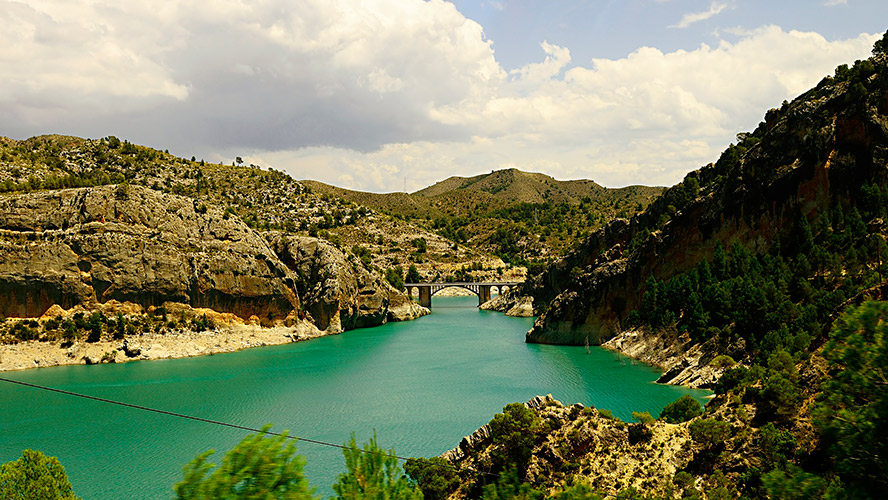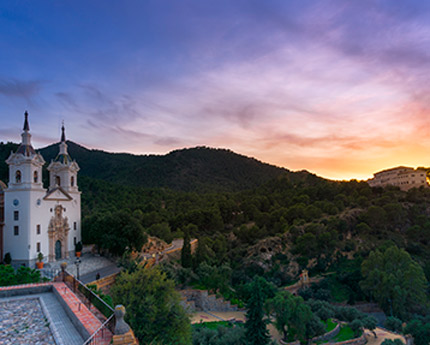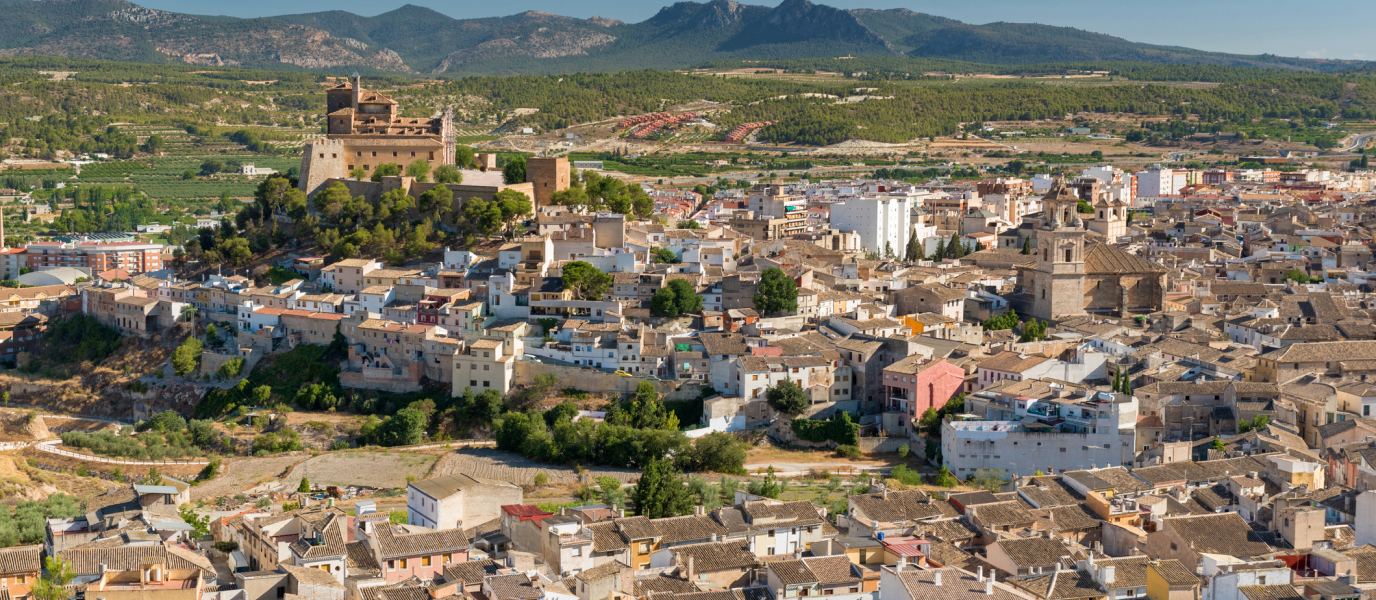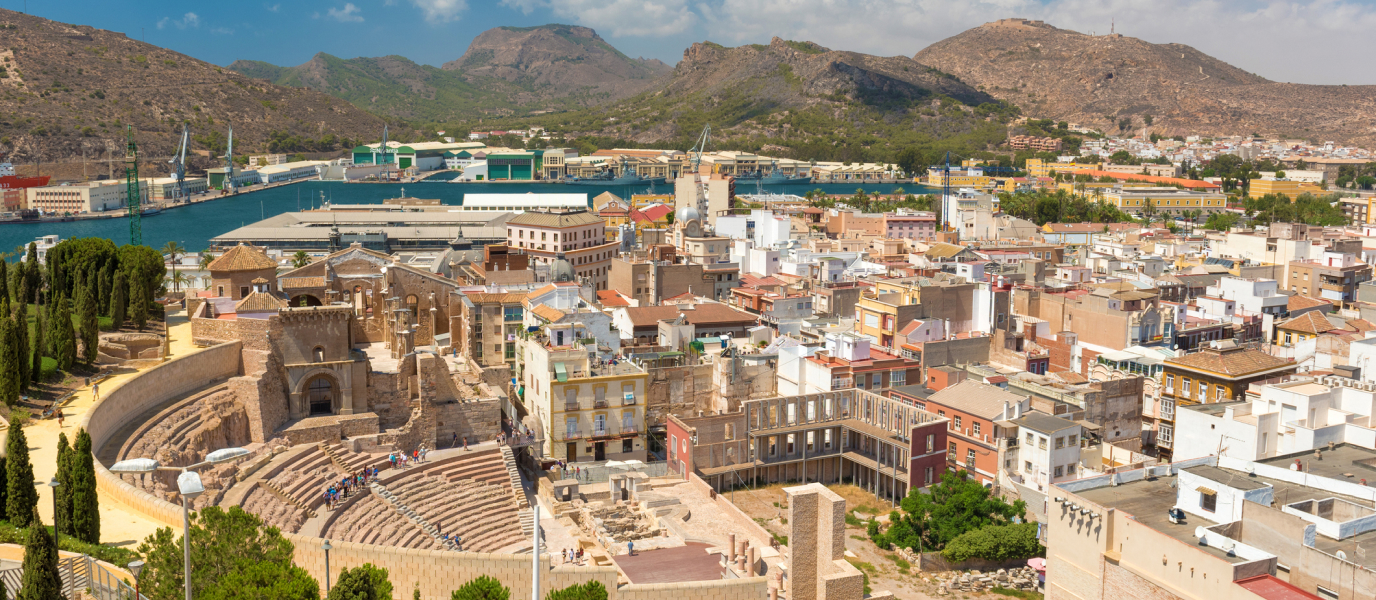Built on the remains of an ancient medieval hermitage at the end of the 17th century, the Sanctuary of the Virgen de la Fuensanta is one of the most important places of worship in the Region of Murcia and home to the main patron saint of the city and its orchards.
Its name, which derives from “Fuente Santa” (Holy Fountain), is related to an ancient spring whose waters were believed by the local population to have miraculous properties, and which the Virgin Mary herself would have caused to spring forth. Whether or not this was the case, the devotion shown by people has made it a very special place and, as a result, the Sanctuary itself reflects the close relationship between the city and its protector through art and architecture.
An unbreakable bond that is also clearly shown in the two descents that the Virgen de la Fuensanta makes every year from her Sanctuary, in the district of Algezares, to the Cathedral, in the historic centre of Murcia, and her respective pilgrimage “ascent”, two of the most important dates on the local calendar, in spring and in September.
- History of the Sanctuary Historia del Santuario
- La Fuensanta, an architectural and artistic wonder La Fuensanta, una joya arquitectónica y artística
- Recommendations and information for the visit
- Carrascoy y el Valle: walks and paths in the area around Fuensanta
History of the Sanctuary
The origins of the Sanctuary of La Fuensanta are deeply rooted in the past. The current area of the El Valle y Carrascoy Regional Park, where the temple is located, has always been the home of monks and hermits, and records mention a small medieval hermitage in the first half of the 15th century. Linked to the presence of that “holy fountain”, the place continued to become more important and at the end of the 17th century, on 16 February 1694 to be exact, work began on a new Baroque style church that would be worthy of the miraculous Lady.
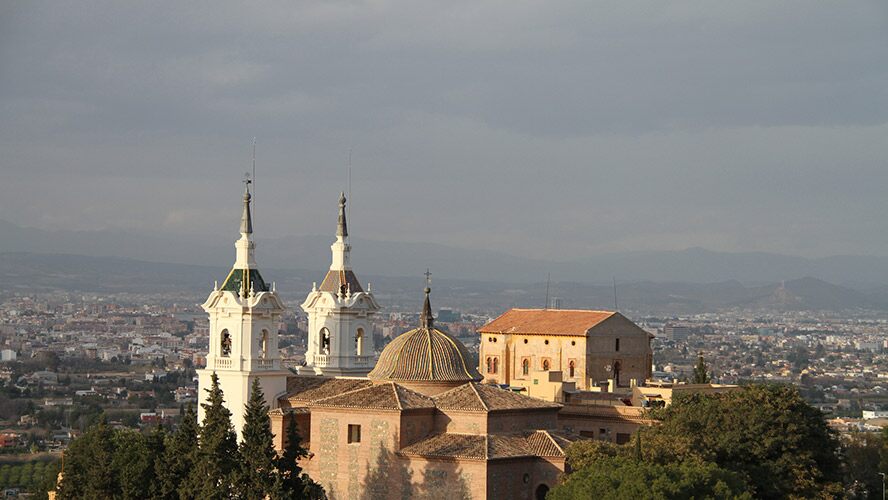
Despite the constant increase in popular devotion to the Virgin de la Fuensanta during the 18th century, it was not until 1927 when, in a very solemn celebration, the Blessed Virgin, under the title of Fuensanta, was canonically crowned and acclaimed as the main patron saint of the city of Murcia and its orchards. A major restoration of the Sanctuary’s towers was also carried out in the first half of the 20th century, although the interior was seriously damaged during the years of the Civil War.
In any case, by the second half of the turbulent 20th century, after a meticulous restoration, the Sanctuary of La Fuensanta would eventually regain all its glory and become the symbol it is today for a large part of society in Murcia.
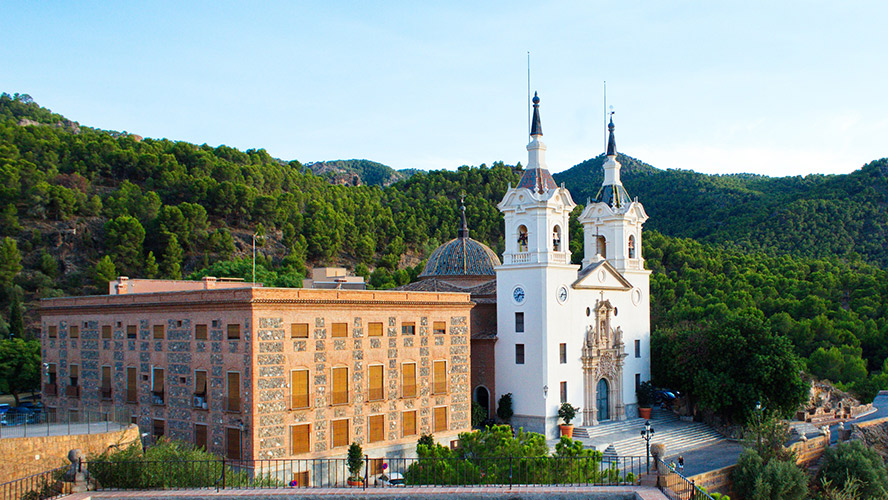
La Fuensanta, an architectural and artistic wonder
Declared an Asset of Cultural Interest in the Monument category, the Sanctuary of La Fuensanta is an example of the best Baroque architecture in Murcia. Its impressive façade, the work of Toribio Martínez de la Vega (1705), is flanked by two towers and crowned by a pair of angels with trumpets holding the coat of arms of the cathedral chapter. Further up, a central carving of the Virgin of La Fuensanta herself is accompanied by Saint Patrick and Saint Fulgentius. Behind the façade, the three naves, the chapels, and the large dome over the transept create a harmonious and well-proportioned space.
Inside, the Sanctuary is not to be missed. From its large main altarpiece, the work of Antonio Carrión Valverde and Nicolás Prados López, to the intriguing reliefs by the sculptor Juan González Moreno and the frescoes by the painter Pedro Flores on the dome, and the representation of the coronation of the Virgin in the choir, the Sanctuary of La Fuensanta is a true work of art.
As for the representation of the Virgin herself, it’s a fairly old image (dating back to the 15th century at least), carved in wood, in which she originally did not carry the Child Jesus in her arms (it was an image of the Incarnation). It was at some point in the 16th century that the image acquired the features that can be seen today.
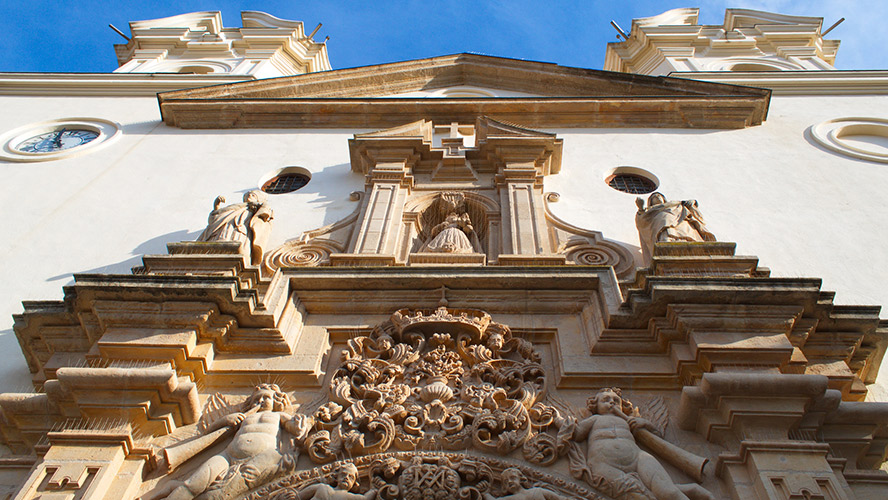
Recommendations and information for the visit
From May to June, the Sanctuary celebrates mass from Monday to Saturday at 6 p.m. and on Sundays and public holidays at 10 a.m., 12.30 p.m., and 6 p.m. From September to April, the service time changes to 5 p.m., and on Sundays and public holidays at 10 a.m., 12.30 p.m., and 6 p.m.
Irrespective of the liturgical acts, the Sanctuary of La Fuensanta is open to the public from Monday to Sunday from 9 a.m. to 1 p.m. and from 4 p.m. to 7 p.m., and admission is free of charge. There are also various local companies that organise guided tours of the temple and the many attractions in the surrounding area. These include the Holy Fountain, in Renaissance style, the origin of the Sanctuary and of the Marian devotion, the Casa del Cabildo (or Casa del Sacristán), in neo-Arabic style, or the Monastery of Nuestra Señora de La Fuensanta, located next to the Sanctuary and connected to each other by an arch.
Along with the religious or cultural visit, no one should miss, of course, the extraordinary views of the city and the orchards of Murcia that can be seen from the Sanctuary itself, especially at sunset. There’s also a terrace right at the foot of the religious site where you can have a drink while enjoying the scenery.
Nevertheless, those who want to experience the fervour and devotion to Fuensanta to the fullest should make sure they join any of the processions and pilgrimages that take place in the Sanctuary with the journey of the Virgin to the Cathedral and her return. The first “descent” takes place on the second Thursday of Lent, to celebrate the Anniversary of the Coronation (with the return or “ascent” on the Tuesday of the third week of Easter), and the second on the Thursday before the Sunday following 8 September, which commemorates its Liturgical Feast. The return to the Sanctuary, on the Tuesday after the Feast, is the most traditional and crowded “ascent”, which usually attracts hundreds of thousands of pilgrims.
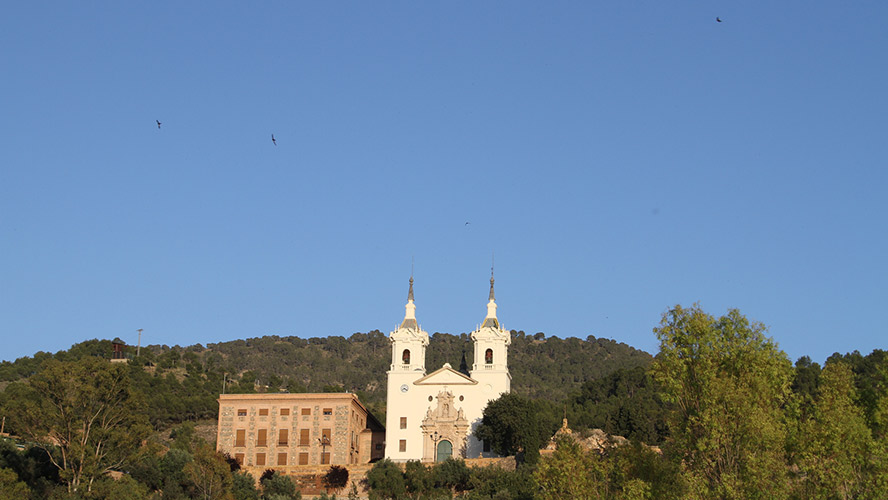
Junto con la visita religiosa o cultural, nadie debería perderse, desde luego, las extraordinarias vistas de la ciudad y la huerta murciana que se pueden contemplar desde el propio Santuario, sobre todo al atardecer. Además, hay una terraza justo al pie del conjunto religioso en la que se puede tomar algo mientras se disfruta del paisaje.
Sin embargo, quien quiera experimentar al máximo el fervor y la devoción por la Fuensanta no puede dejar de sumarse a cualquiera de las procesiones y romerías que se celebran en el Santuario con el traslado de la Virgen a la Catedral y su vuelta. La primera “bajada” se realiza el segundo jueves de Cuaresma, para celebrar el Aniversario de la Coronación (con el regreso o “subida” el martes de la tercera semana de Pascua), y, la segunda, el jueves anterior al domingo siguiente al 8 de septiembre, que conmemora su Fiesta Litúrgica. El regreso al Santuario, el martes posterior a la Fiesta, es la “subida” más tradicional y multitudinaria, en la que se suelen congregar cientos de miles de romeros.
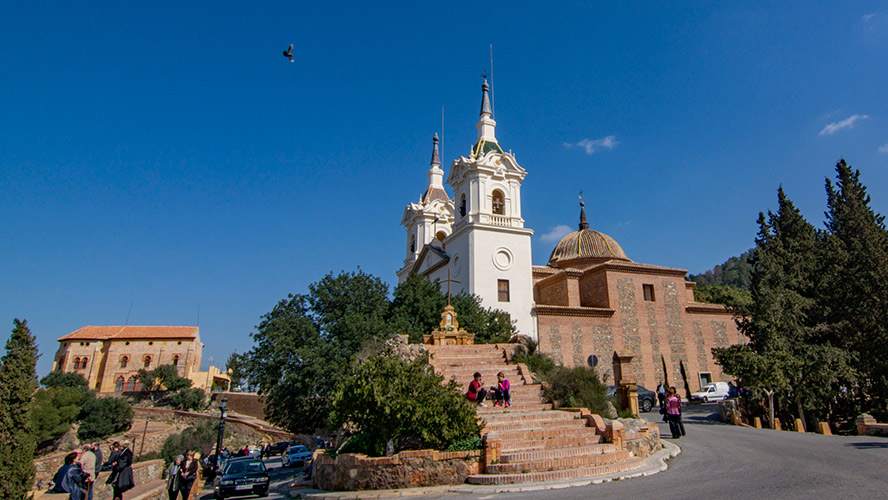
Carrascoy y el Valle: paseos y senderos por los alrededores de la Fuensanta
Ubicado en pleno Parque Regional El Valle y Carrascoy –un Espacio Natural Protegido de la Región de Murcia–, el Santuario de la Fuensanta es también un punto de partida perfecto para explorar la zona, tanto su rica naturaleza como su singular patrimonio cultural, religioso y arquitectónico.
En el caso de la primera, varios senderos recorren el extraordinario bosque mediterráneo y los montes que hacen de telón de fondo al Santuario. Itinerarios como el Camino del Apóstol (GR 250), el Sendero de las Trincheras y el del Contrabando, la Senda del Mirador de La Naveta y la del Mirador de la Cresta del Gallo, o la Subida al Pico del Relojero, entre muchos otros, de distintos niveles de dificultad y extensión, invitan a disfrutar de un entrono natural realmente mágico.
Por otra parte, la Ermita y el Monasterio de La Luz (poblado originalmente por anacoretas), las fortificaciones tardo-romanas y árabes de La Luz, Los Garres o La Asomada, el Castillo de la Luz, los restos arqueológicos del Santuario Íbero de la Luz, la Ermita y el Centro de Visitantes de San Antonio El Pobre y el Convento de los Franciscanos de Santa Catalina del Monte son solo una muestra del amplio catálogo de posibilidades que ofrece el rico patrimonio histórico y cultural de este fascinante Espacio Natural.
Además, vale mucho la pena acercarse al Centro de Visitantes de La Luz, ubicado a menos de 2 kilómetros del Santuario. Se trata de un moderno equipamiento, de casi 1.000 metros cuadrados distribuidos en tres plantas, en el que se pueden conocer al detalle los recursos naturales y patrimoniales del Parque Regional de forma global y didáctica a través de maquetas, espacios expositivos, recursos gráficos y audiovisuales, objetos históricos…, desde la época de los íberos hasta nuestros días.
